Svarog: God Of Cosmic Fire And Ruler Of The Sky In Pre-Christian Slavic Pantheon
Angela Sutherland - AncientPages.com - Svarog (Swarog ) is one of the most important deities in the Slavic pantheon. He is the Slavic god of celestial fire and patron of blacksmiths.
Svarog by Andrey Shishkin. Image credit: Andrey Shishkin - CC BY
He is the Supreme Heavenly God who always sleeps, and yet, he controls the flow of Life and Universal Order and governs the World of Yav, the 4-dimensional realm of physical beings. He entrusted this world to Perun, God of Heaven and Lightning.
One day - according to the beliefs - when Svarog wakes up, it will end the world. Svarog is a ruler of the sky, fire and is associated with the Sun.
Ancient Slavs worshiped Svarog as the god of the sky (heaven), and a guard of the cosmic fire represented by the Sun. The root of his name ("svar" means bright, clear) is related to the Sanskrit word "swar" (sun, glow, sky). A long-lasting and respectable habit of bowing and praying to the rising Sun was still widespread after Christianization was introduced in the Slavic countries.
In many Slavonic countries, rural folk still preserve deep respect for fire, which has always had a sacred character among those who addressed prayers to fire. For example, the old forbade the young to swear or shout when a fire was lit in the house.
Some old myths confirm that Svarog transmitted his creative sovereign power to his children, and a Byzantine chronicler, John Malala (490-565), summarized the cosmogony of the Slavic pagans in these terms:
Svarog, a ruler of the sky, fire, associated with the sun in Slavic beliefs. Image source
'After Svarog reigned his son, named Sun, who was also called Dazhbog. The Sun is the king and son of Svarog; he is named Dazhbog, for he was a mighty lord.' The other son of Svarog, Fire (or "ogon," which can be compared to the Sanskrit Agni), is mentioned in ancient work entitled 'Unknown Admirer of Christ.'
Svarog was also considered the guardian of the Slavic home fire and the sacrificial fire, associated with other gods such as Perun and Weles. As a divine blacksmith, Svarog throws lightning bolts and helps Perun to fight his antagonist, Weles.
According to Bruno of Querfurt (c. 974 – 1009 AD), a sainted missionary bishop and martyr, who was beheaded near the border of Kievan Rus and Lithuania while trying to spread Christianity in Eastern Europe, Svarog was widely worshiped in the region of the pre-Christian Slavs.
Special priests performed a divination in a hidden temple surrounded by sacred forests and cared for the sacred horse. They had a tradition of human sacrifices that usually took the form of beheading, which may suggest that sacrificial blood was apparently of importance. One of their victims was the Bishop of Mecklenburg on Jan. 10, who died in martyrdom. Another chronicler also confirmed the Svarog cult, Adam of Bremen, who lived in the second half of the 11th century.
Known under different names, Svarog has also been sometimes identified with Hephaestus, the god of fire and blacksmith, one of the 12 Olympian Gods, a mechanical engineer, a god of metallurgy, and a craftsman. However, to what extent the Greeks gods were thought to resemble their Slavic counterparts is uncertain.
Regarding the mighty god Svarog, identifying this mythological figure has always been a problem. His name is mentioned in many old writings but without references to his activities. To talk about Svarog means to rely on various tales and songs about him, but these sources cannot be verified.
Written by – A. Sutherland AncientPages.com Staff Writer
Updated on November 25, 2023
Copyright © AncientPages.com All rights reserved. This material may not be published, broadcast, rewritten or redistributed in whole or part without the express written permission of AncientPages.com
Expand for referencesReferences:
Christensen, Hammer Warburton, The Handbook of Religions in Ancient Europe
Curta F. Holt A., Great Events in Religion
Andrén, Jennbert, Raudvere, Old Norse religion in long-term perspectives
More From Ancient Pages
-
 Catherine Of Valois – Scandalous Queen Who Caused Drama Even After Her Death
Featured Stories | Feb 4, 2019
Catherine Of Valois – Scandalous Queen Who Caused Drama Even After Her Death
Featured Stories | Feb 4, 2019 -
 Charles VI Of France – The King Who Was Made Of Glass
Featured Stories | Jan 22, 2016
Charles VI Of France – The King Who Was Made Of Glass
Featured Stories | Jan 22, 2016 -
 Unknown 2,000-Year-Old Settlement Hidden In The Polish Tuchola Forest Revealed By LIDAR
Archaeology | Feb 18, 2019
Unknown 2,000-Year-Old Settlement Hidden In The Polish Tuchola Forest Revealed By LIDAR
Archaeology | Feb 18, 2019 -
 Odeuropa – Unusual Project Will Recreate The Smells Of Old Europe And Store The Scents In A Library
News | Nov 17, 2020
Odeuropa – Unusual Project Will Recreate The Smells Of Old Europe And Store The Scents In A Library
News | Nov 17, 2020 -
 DNA Study Of ‘Cheddar Man’ Re-Writes Ancient History Of Britain
Archaeology | Feb 9, 2018
DNA Study Of ‘Cheddar Man’ Re-Writes Ancient History Of Britain
Archaeology | Feb 9, 2018 -
 Statue Of Apollo Discovered in Ancient City Of Prusias ad Hypium, Turkey
Archaeology | Aug 26, 2022
Statue Of Apollo Discovered in Ancient City Of Prusias ad Hypium, Turkey
Archaeology | Aug 26, 2022 -
 Danger Lurking In The Woods – Mysterious Vanishings, Deaths And Unusual Behavior – Part 3
Featured Stories | Jul 9, 2018
Danger Lurking In The Woods – Mysterious Vanishings, Deaths And Unusual Behavior – Part 3
Featured Stories | Jul 9, 2018 -
 On This Day In History: First Battle Of Gaza Was Fought – On March 26, 1917
News | Mar 26, 2017
On This Day In History: First Battle Of Gaza Was Fought – On March 26, 1917
News | Mar 26, 2017 -
 Unique Ancient Half-Mummy Unearthed In Luxor, Egypt Mystifies Archaeologists
Archaeology | Jun 6, 2022
Unique Ancient Half-Mummy Unearthed In Luxor, Egypt Mystifies Archaeologists
Archaeology | Jun 6, 2022 -
 On This Day In History: Teotihuacan’s Warlord Siyaj K’ak’ Conquers Tikal – On Jan 16, 378
News | Jan 16, 2017
On This Day In History: Teotihuacan’s Warlord Siyaj K’ak’ Conquers Tikal – On Jan 16, 378
News | Jan 16, 2017 -
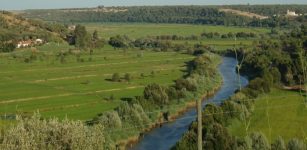 Mummification In Europe May Be Older Than Previously Known – 8,000-Year-Old Evidence Presented
Archaeology | Mar 4, 2022
Mummification In Europe May Be Older Than Previously Known – 8,000-Year-Old Evidence Presented
Archaeology | Mar 4, 2022 -
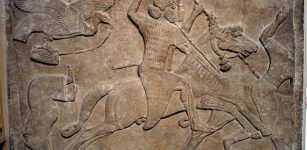 Invention Of Ancient Military Technologies Throughout World History Investigated
Archaeology | Oct 23, 2021
Invention Of Ancient Military Technologies Throughout World History Investigated
Archaeology | Oct 23, 2021 -
 Mystery Woman’s DNA Reveals Intriguing Relationship Between Neanderthals And Modern Humans In Europe
DNA | Dec 16, 2024
Mystery Woman’s DNA Reveals Intriguing Relationship Between Neanderthals And Modern Humans In Europe
DNA | Dec 16, 2024 -
 3,000-Year-Old African Musical Instrument Can Help Modern Medicine
Archaeology | Sep 19, 2018
3,000-Year-Old African Musical Instrument Can Help Modern Medicine
Archaeology | Sep 19, 2018 -
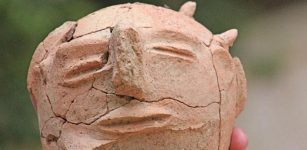 A Head Of A Statue Dated To 700 BC, Animal Figurines And Jordan Valley’s Occupation History
Archaeology | Sep 1, 2018
A Head Of A Statue Dated To 700 BC, Animal Figurines And Jordan Valley’s Occupation History
Archaeology | Sep 1, 2018 -
 Ogdoad Of Hermopolis – Ancient Egyptian Concept Of Eternal And Primeval Forces
Egyptian Mythology | May 16, 2019
Ogdoad Of Hermopolis – Ancient Egyptian Concept Of Eternal And Primeval Forces
Egyptian Mythology | May 16, 2019 -
 Rare Gilded Mask Discovered On Mummy Of Ancient Egyptian Priest Serving Sky Goddess Mut
Archaeology | Jul 17, 2018
Rare Gilded Mask Discovered On Mummy Of Ancient Egyptian Priest Serving Sky Goddess Mut
Archaeology | Jul 17, 2018 -
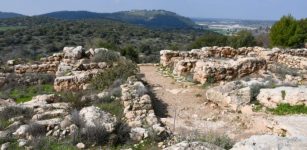 Story Of David And Goliath Linked To Horvat Qeiyafa In The Valley Of Elah, Israel
Archaeology | Feb 22, 2022
Story Of David And Goliath Linked To Horvat Qeiyafa In The Valley Of Elah, Israel
Archaeology | Feb 22, 2022 -
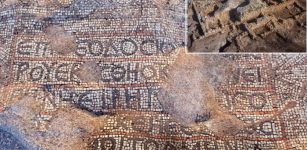 2700-Year-Old Farmhouse, Byzantine Monastery With Silver Coins And Colorful Mosaics Unearthed In Rosh Ha-‘Ayin, Israel
Archaeology | Dec 31, 2015
2700-Year-Old Farmhouse, Byzantine Monastery With Silver Coins And Colorful Mosaics Unearthed In Rosh Ha-‘Ayin, Israel
Archaeology | Dec 31, 2015 -
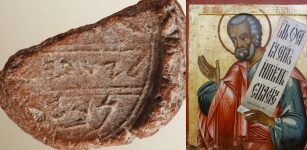 Ancient Seal Offers First Biblical Evidence Of The Prophet Isaiah?
Archaeology | Feb 27, 2018
Ancient Seal Offers First Biblical Evidence Of The Prophet Isaiah?
Archaeology | Feb 27, 2018


